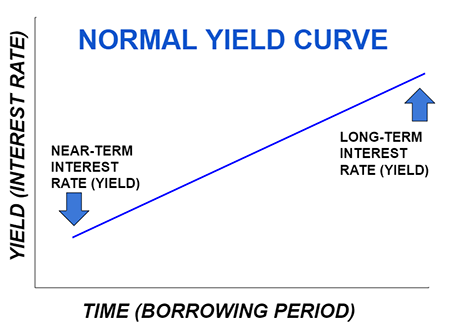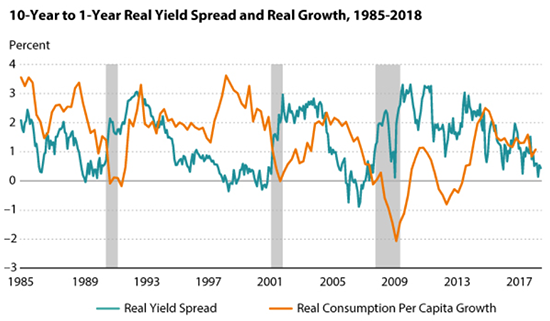The stock market had a wild ride this week.
On Thursday, the major indices saw their biggest downswing and intraday recovery since May 2010. The Dow lost 785 points at the worst point, with the market roaring back in the last hour.
The swings were tied to three things: U.S.-China trade relations, the direction of interest rates, and the yield curve.
On the U.S.-China trade front, the week began with optimism regarding a potential trade war truce between Washington, D.C., and Beijing.
Then the optimism turned to worry. Then the worry turned into a mini-panic when Meng Wanzhou, the Chief Financial Officer of the China tech giant Huawei — and daughter of the company’s founder, a former Chinese army officer — was arrested in Canada on the request of U.S. authorities.
To understand why the arrest of Huawei’s CFO was a big deal, imagine if a top-level executive of Apple, Google or Microsoft had been arrested on China’s orders while traveling in Asia. Beijing took the move as a slap in the face, and also as a potential act of sabotage for U.S.-China trade talks.
But now we come to what investors are truly nervous about: The future path of interest rates.
The markets made a dramatic recovery on Thursday on rumors that the Federal Reserve would slow down its interest-rate-hiking campaign.
This, in turn, was related to the other big factor that spooked investors this week: An inverted yield curve.
For many investors, and large pockets of the financial press, an inverted yield curve is a sign that the sky is falling. You shouldn’t take it that way, however.
While an inverted yield curve is a source of concern, it isn’t a reliable signal as to what stock prices are going to do. And it says nothing at all about how stocks will perform in 2019. As such, it’s helpful to understand the inverted yield curve as a concept. But you shouldn’t waste energy worrying about it.
So, what is an “inverted yield curve” exactly?
The yield curve is a relationship between short-term and long-term interest rates, or “yields,” on government bonds.
When the yield curve is normal, long-term rates are higher than short-term rates. This is logical for reasons that make perfect sense.
If you buy U.S. government securities, you are loaning money to Uncle Sam. Under normal conditions, you would expect Uncle Sam to pay a lower interest rate to, say, borrow money for two years compared to borrowing money for 10 years.
The longer the borrowing period, the higher the interest rate should be. That is why a normal yield curve is like a seesaw, with short-term rates below long-term rates, as the illustration shows below.

An inverted yield curve is a rare occurrence. It happens when long-term rates are below short-term rates.
This is an odd thing because, under normal circumstances, you would not expect long-term rates (yields) to be lower than short-term ones. When this happens, and the yield curve “inverts,” it is like the seesaw flipping to a different position. Again, this happens very rarely.

For whatever reason, an inverted yield curve means investors are expecting lower interest rates in the future. This is usually tied to a gloomy economic outlook.
If a recession or a downturn is coming, the Federal Reserve is likely to lower interest rates and economic activity is likely to dry up. That, in turn, is tied to falling interest rates at the long end of the curve. This is why an inverted yield curve is historically a recession signal.
Every U.S. recession in the past 50 years has been preceded by an inverted yield curve. That’s why the inverted yield curve is such an ominous sign for the media and many investors.
You can see this via the chart below, which comes from the St. Louis Fed. The gray shaded areas are periods of recession in the U.S. economy. The teal-colored line represents the yield curve. When the teal-colored line dips below zero, it means an inversion. Every time it happened, a recession followed.

The St. Louis Fed chart does not show an inverted yield curve yet for this year.
But a different part of the curve than what is shown on that chart, the spread between two-year and three-to-five-year treasuries, did in fact invert this week. So the “inverted yield curve” is officially here.
That is how an inverted yield curve works and what it means. More or less, an inverted yield curve is a recession signal and a sign of oncoming pain. But we also said you shouldn’t really worry about an inverted yield curve, and here is why:
- An inverted yield curve does not tell you what stock prices will do.
- An inverted yield curve does not tell you when a recession will start.
- On both of those fronts, an inverted yield curve says nothing at all.
According to data from Credit Suisse, equities have made 15-16% gains, on average, in the 18 months following a yield curve inversion. The data covers a spread of -11% to +30%.
So, if anything, the past data from yield curve inversions suggests stocks could rise for more than a year — well into 2020 — before heading into a decline.
How is this logical? Because past data also suggests there is plenty of lead time between the yield curve signal itself and the time that a recession actually begins.
Michael McDonough, the Chief Economist at Bloomberg, looked at inverted yield curve recession signals dating back to the late 1970s. Here are the time periods between the inverted yield curve signal and the recession’s actual start date:
- 704 days
- 1,073 days
- 564 days
- 293 days
- 502 days
Once again, this suggests an inverted yield curve is not something to worry about.
As another key point to remember, we know that another recession is coming eventually. We also know another bear market is coming, at some point in time.
That is simply because recessions are part of the economic cycle, and bear markets are part of investing. Both roll around every few years; and it’s been a decade since the last round, which means one or both are on the way.
But will a recession and a bear market, or both together, come in 2019? Maybe. The possibility can’t be ruled out.
And yet, the funny thing about the inverted yield curve is: If you are going by historical data implications, the more logical conclusion from the first inverted yield curve signal is to say “rest easy until 2020!”
We aren’t trying to say an inverted yield curve is bullish, of course. That would be a stretch with all the other points of concern for stocks right now. But it’s certainly not something to have a “sky is falling” attitude about.
It’s good to be informed, and it’s good to be calm and measured with a logical investment process — not responding with emotional gyrations to the latest thing the media gets worked up about.
The inverted yield curve signal is another one of those things that is helpful to understand — but that you, as an investor, honestly don’t have to fret over.





